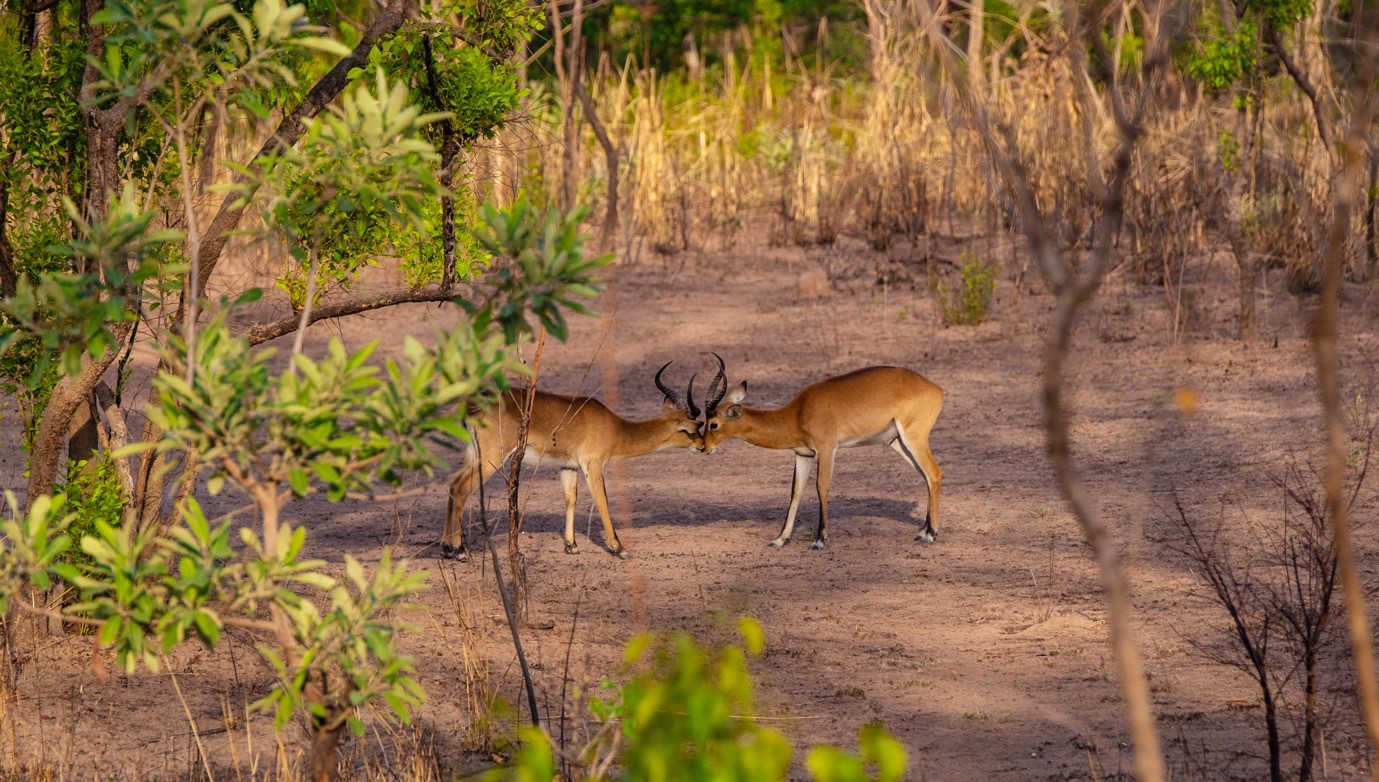Poaching, Bush Burning: Mole National Park’s ‘conservatory’ scars – Nsemkeka
Bush burning as a means of hunting was historically common in many African societies. However, while modernisation and technological innovation have significantly reduced the practice, it is still carried out in some areas, including conservation centres.
One such area is Ghana’s Mole National Park (MNP), where some people burn parts of the forests to carry out illegal hunting expeditions, otherwise known as poaching.
While smaller games such as deer, grasscutter and bushbuck are the most targeted species by local poachers, there are also suspicions of poaching attempts made on bigger games such as elephants.
The Mole National Park
One of Ghana’s seven national parks, the MNP was declared by President Kwame Nkrumah as a game reserve in 1958 and gazetted in 1971. It is the country’s premier and largest wildlife conservation centre, covering an area of about 5,477 square kilometres.
Located in the Larabanga township of the Savannah Region – about 24km from Damongo, the regional capital, and about 700km from Accra, the nation’s capital – the MNP is home to about 94 mammal species, 300 bird species, 33 reptile species and nine amphibian species. Some of the animals found in the park include the African elephant, the leopard, the buffalo, the lion, the roan antelope, the bushbuck, the kob, the hartebeest and the giant pangolin.
Many of these species are captured in the International Union for Conservation of Nature (IUCN) 2009 Red list as either vulnerable, endangered or threatened species. However, some of these species, which attract a significant number of tourists, are also the target of poaching for various reasons such as commercial and subsistence.
The MNP currently receives about 17,000 tourists per annum, with the number estimated to increase at an average of 10% per annum, according to a 2010 study. This highlights its role as a significant contributor to Ghana’s tourism fortunes, economy and overall GDP. Despite all these, poaching still takes place on the facility.
The Poaching Phenomenon
Like many national parks across Africa, the MNP suffers from poaching. According to a 2007 study, the main sources of bushmeat supply to the Techiman market in Ghana’s Bono East Region were Damongo, Daboya, Kabampe and Tuna, which are communities in close proximity to the MNP.
According to Mr. Benjamin Kwesi Agbenor , the Public Relations Officer (PRO) of the MNP, some poachers resort to burning “small” areas of the forests to hunt for grasscutters.
“Some poachers who hunt for grasscutters would like to burn small parts of the natural forest just to catch some game,” he said in March.“The smoke from these fires force the animals out of their natural homes thereby exposing them to the hunters to catch them for game.”
During a visit to the park, the debris of burnt trees were spotted in parts of the forests, suggesting the activities of these poachers may be more severe than reported.
“In that case [when they burn parts of the forests for game], they destroy the natural vegetation and this … influences climate change,” Mr Agbenor lamented.
Wildlife biologists and conservationists across the globe consider poaching to have a detrimental effect as it leads to a decline in wildlife population and the functionality of ecosystems is disturbed.
Mr Agbenor, who also doubles as the Assistant Law Enforcement Officer of the MNP, said poaching at the park “is done on a subsistence level” and that “some of the commonest weapons used for these expeditions by the perpetrators include rifles, shot guns, gin traps etc.”
The smoke from the bush-burning by the poachers also pollutes the environment and releases greenhouse gases.
According to the World Health Organisation in a 2020 report, 28,000 premature deaths are recorded in Ghana annually as a result of air pollution, with the annual average concentration of particulate matter (PM2.5) pollution in the country being 11 times higher than WHO recommended concentration levels.
With air pollution being the second highest health risk factor for death and disability, after malnutrition, young children and adults over 50 are most at risk of disease and premature death.
Chief among the causes of poor air quality in Ghana is open burning, as well as cooking using wood and charcoal, slash-and-burn methods of farming, among others.
The Case of Elephants
The elephant population at the Mole National Park declined by over 30 per cent (from 589 to 401) between 1993 and 2006, according to a study.
In many parts of Africa, elephants are poached for their ivory. During a safari tour of the MNP, some elephants were discovered with broken tusks, while others had at least a whole tusk removed or out of place.

